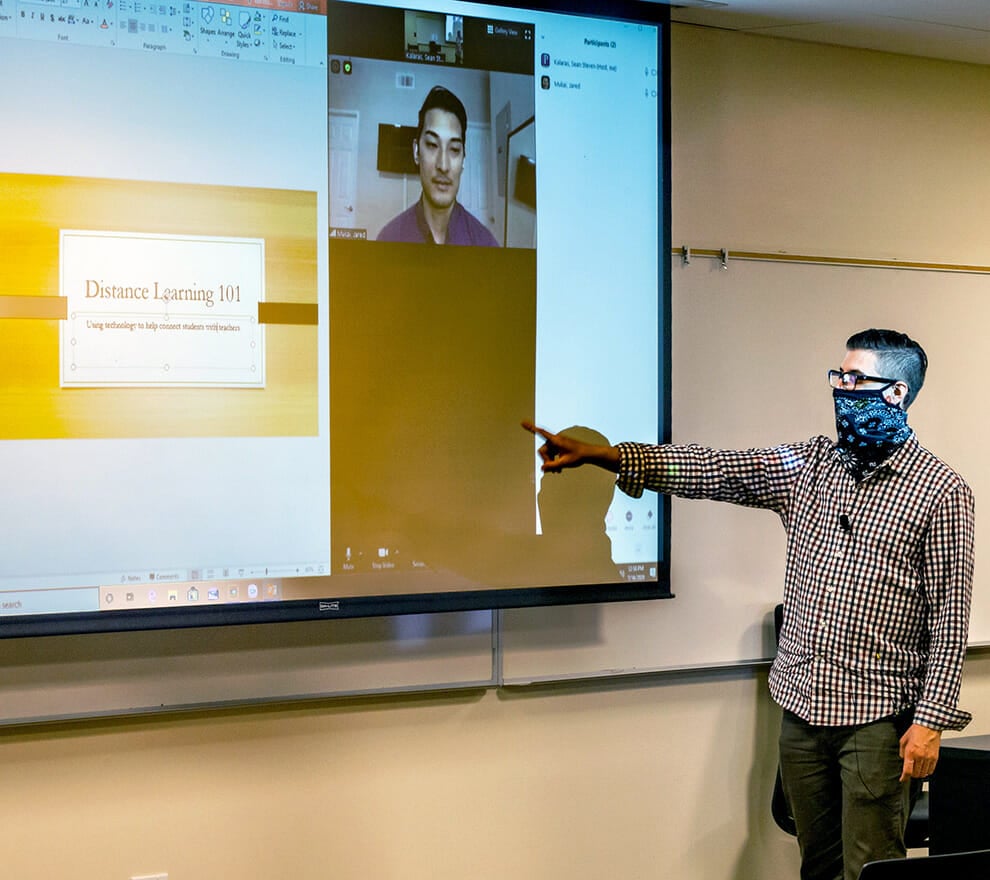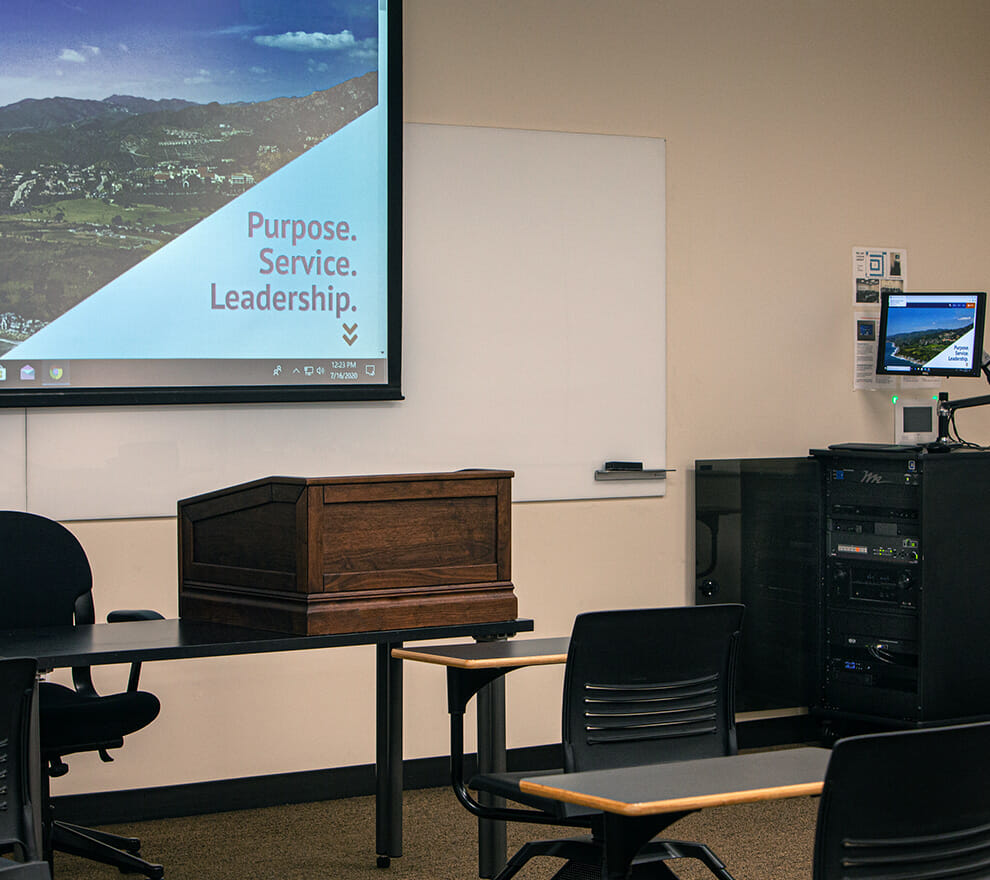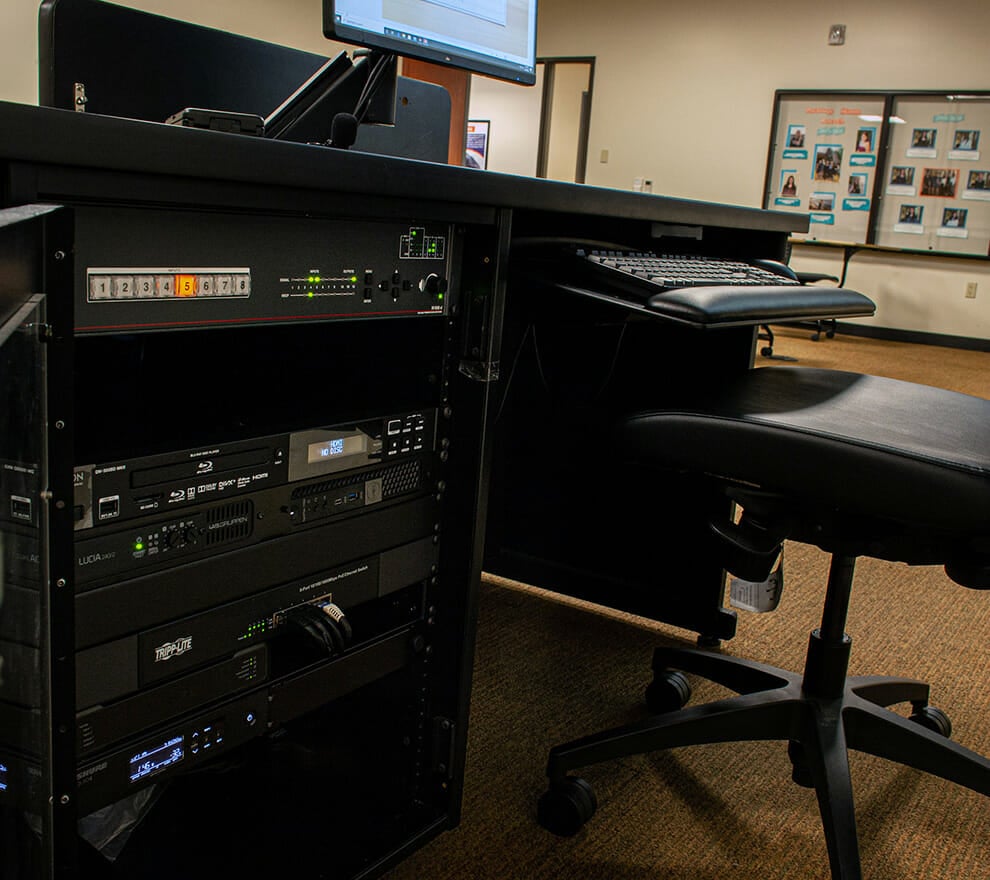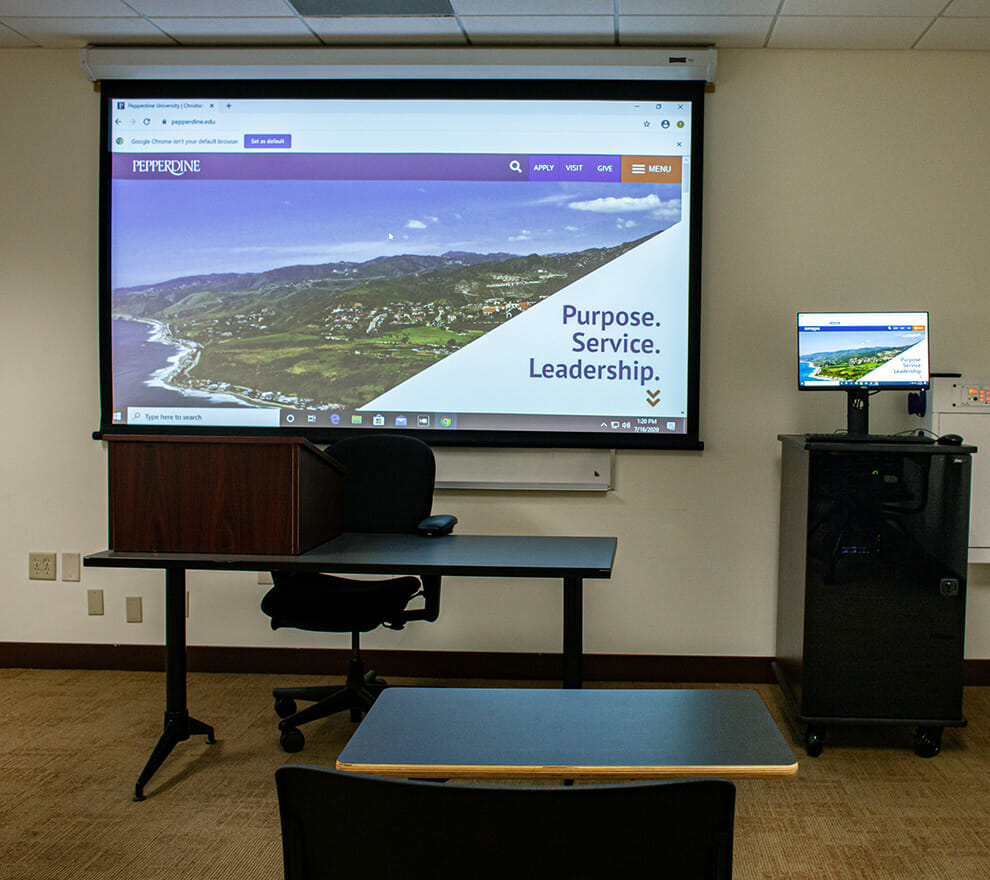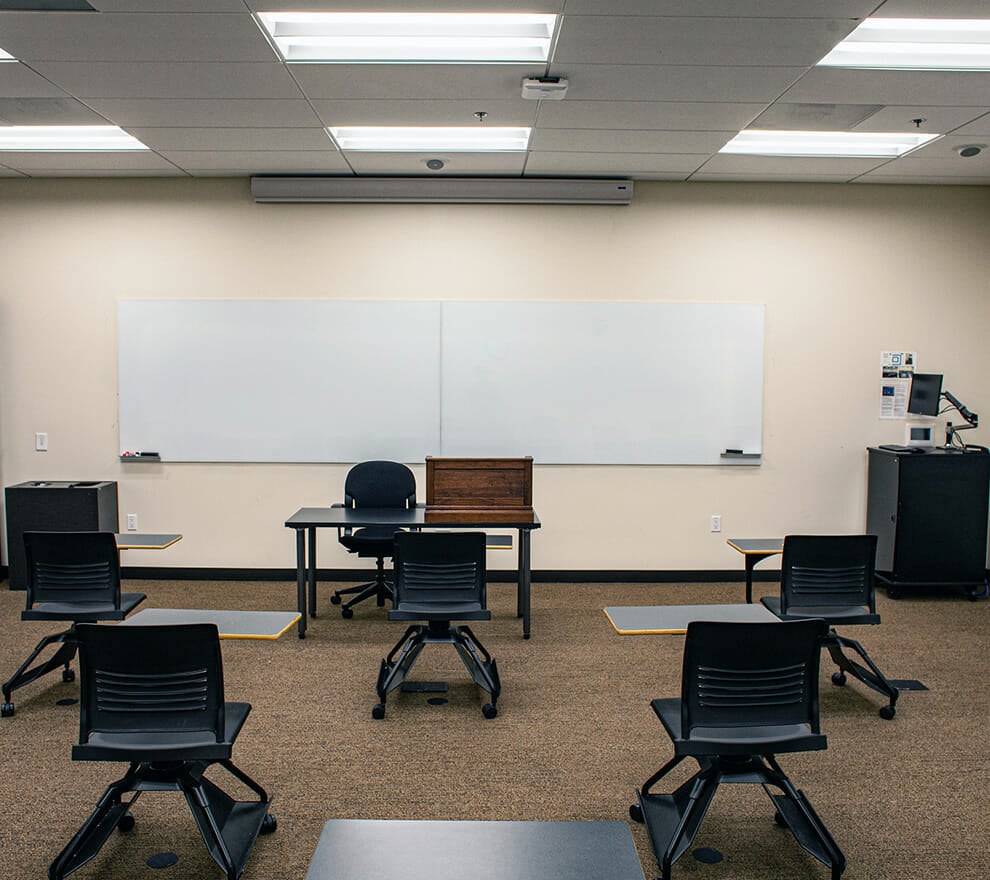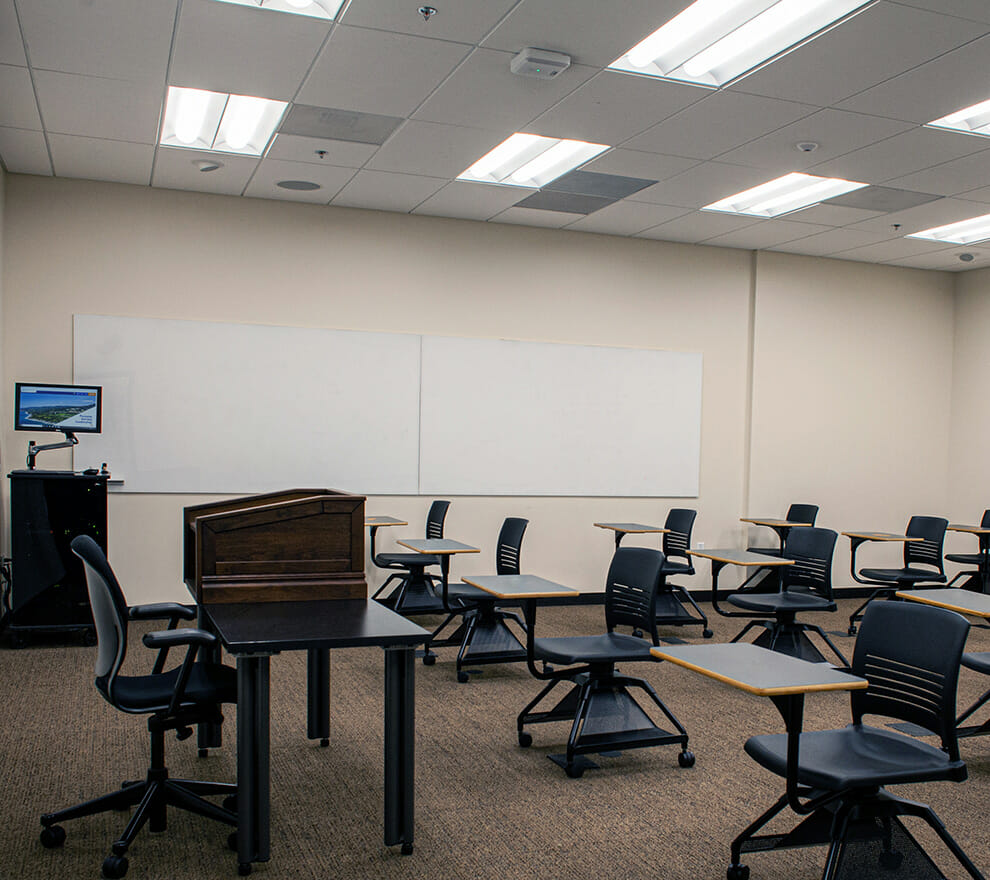In the wake of the COVID-19 pandemic, it’s no secret that the entire education industry is shifting its approach to the engagement and education of students. In the middle of the Spring 2020 semester, campuses were shut down and students and faculty alike had to adapt to a fully remote model and a new mindset for learning. No matter the platform used for these virtual experiences, challenges were abundant, and the variable of human connection was beginning to feel lost in the shuffle. Pepperdine University, a private research university with five locations across Southern California, knew they had to do something to prepare for distance learning in the Fall semester and sought to update their technology systems to accommodate this new normal. Most importantly, they sought to create environments that were easy to use, consistent across all campuses and flexible to accommodate for synchronous and asynchronous learning. Additionally, they knew that it would take a lot of research and ingenuity to get it right. So, as early as April, the University’s on-site AV team dug in to figure out what the classroom of the future would look like and what it would require.
“We have a very talented AV team, and we pride ourselves in staying one step ahead with frequent improvements to classroom technology,” says Jared Mukai, PhD and Manager of AV Technologies and Special Projects at Pepperdine. “Still, this unprecedented reality left us faced with the need to rethink the ‘old school’ way of facilitating meaningful classroom discussion. We had to adapt, and we had to do it quickly.”
Many universities like Pepperdine are implementing more permanent remote or hybrid learning solutions across their classrooms and seeking ways to provide the on-campus experience from a distance. As a result, the equipment needed to create such environments is in high demand and short supply. Anticipating this demand, Mukai’s team worked diligently to figure out what they would need to build hybrid distance learning classrooms and purchased that equipment as quickly as possible. By the end of June, the University had successfully procured cameras, microphones and computers for their new distance learning classrooms and was ready to install and deploy them.
In a typical year, Pepperdine practices a room refresh cycle at a rate of 20 percent, meaning about 40 classrooms receive new technology solutions. This year, however, the team was challenged with multiplying that refresh by five-fold and overhauling every single classroom across all locations in the span of just six weeks.
Having worked before with Diversified, a global technology solutions provider headquartered in Kenilworth, NJ, Mukai and his team engaged them once again to help bring their efforts to fruition and provide installation of the new equipment as well as integration services for new portable rack-based systems into existing classroom environments.
“With a project much larger than we’re used to and such a short timeline, the team at Diversified made us feel comfortable that it could not only be done but that it would also be done right,” comments Mukai.
The installation covered 166 rooms—74 undergraduate and 92 graduate classrooms. Each undergraduate room was equipped with a Panasonic 22x PTZ Camera, Shure QLXD Wireless Microphone System and P300 Digital Signal Processor as well as a PC that was pre-configured by Pepperdine to include Zoom and Panopto video conferencing solutions.
The graduate classrooms were equipped with the same hardware with the addition of new freestanding mobile equipment racks that accommodate the new equipment for distance learning. Each rack was fabricated in Diversified’s Anaheim facility and then delivered to the University and wired to connect with the equipment in the existing wall rack. Additionally, in the graduate rooms where a PC did not exist, Diversified provided AV system programming to add a PC input button for functionality with Extron TLP, MLC, or similar controllers.
“Our goal for the fall semester is to provide a simple, flexible, turn-key solution to connect our students to one another and to their professors,” adds Mukai. “We will continue to look for ways to improve the teaching and learning experience for those students who are unable to attend classes in-person.”
“As schools prepare themselves for educating in socially-distanced world, we are seeing higher education institutions evolve to a distance or hybrid learning model,” adds Marc Nutter, account executive at Diversified. “As they say, ‘Necessity is the mother of invention.’ Diversified and its partners are pivoting to solve today’s problems by leveraging new and existing technologies.”
Mukai concludes, “We are doing the best we can with what we know today but, what we know could change tomorrow. The technology solutions provided are giving us the flexibility to adapt as things evolve and deliver the best learning experiences possible for our student body.”
AV Network
